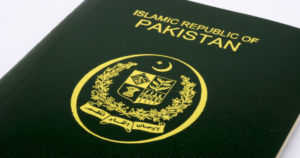
Gwadar, Pakistan: A massive sit-in protest has engulfed the Pakistani port city of Gwadar, home to the country’s flagship Belt and Road Initiative port project in the country, severely damaging prospects for more Chinese investment in Gwadar, according to Nikkei Asia.
Earlier, the month-long sit-in, led by Maulana Hidayat ur Rehman, a local political leader, has drawn thousands of people to the Give Rights to Gwadar Movement.
Further, woman demonstrators are camped at the entrance to the Chinese-controlled port as they listen to Rehman’s fiery speeches.
Also, Rehman has upped the ante, saying that if the protesters’ demands are not met, he will add another: a change to revenue sharing between China and Pakistan at the port.
Earlier, the demonstrators were demanding an end to deep-sea fishing by trawlers in nearby waters, removal of security checkpoints in the city, and freer trade with neighboring Iran, according to Nikkei Asia.
Further, Gwadar port is the centerpiece of US $50 billion in projects that make up the Pakistan portion of China’s Belt and Road Initiative, known locally as the China-Pakistan Economic Corridor (CPEC).
“The local population has no stake in CPEC, and hence these protests were long coming,” said James M. Dorsey, a senior fellow at the S. Rajaratnam School of International Studies in Singapore.
“Outside forces hostile to China might be taking advantage of the protests,” he added.
Further, the port city of Gwadar is home to about 138,000 people, around two-thirds of whom depend on fishing for their livelihood which invites opposition to deep-sea trawlers, according to Nikkei Asia.
Last year, Gwadar fishermen protested when it was reported that 20 Chinese deep-sea trawlers had been allowed to fish in waters off Gwadar.
Earlier, in July, five Chinese deep-sea fishing vessels were seized by the Pakistan Maritime Security Agency near Gwadar with fish aboard.






